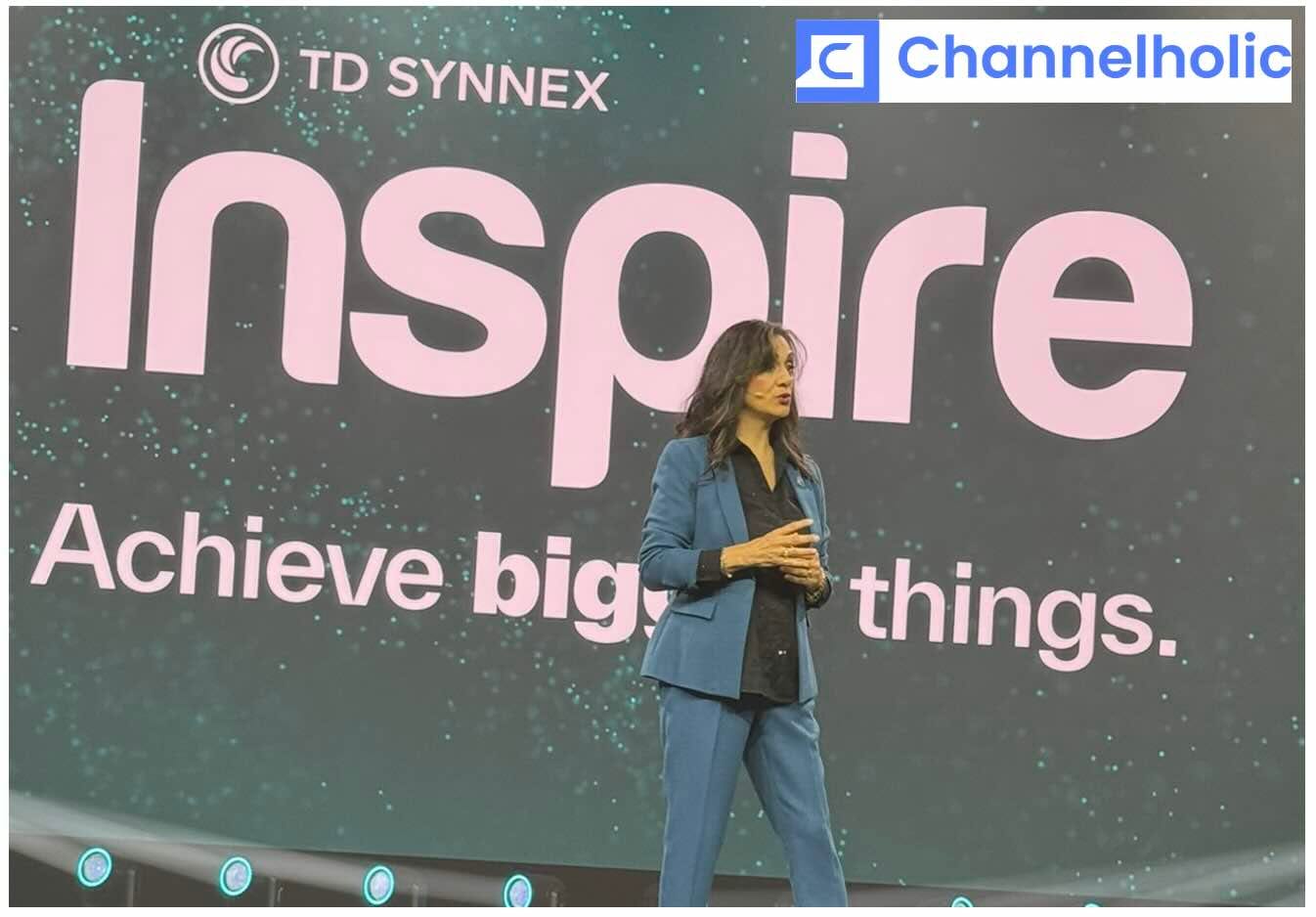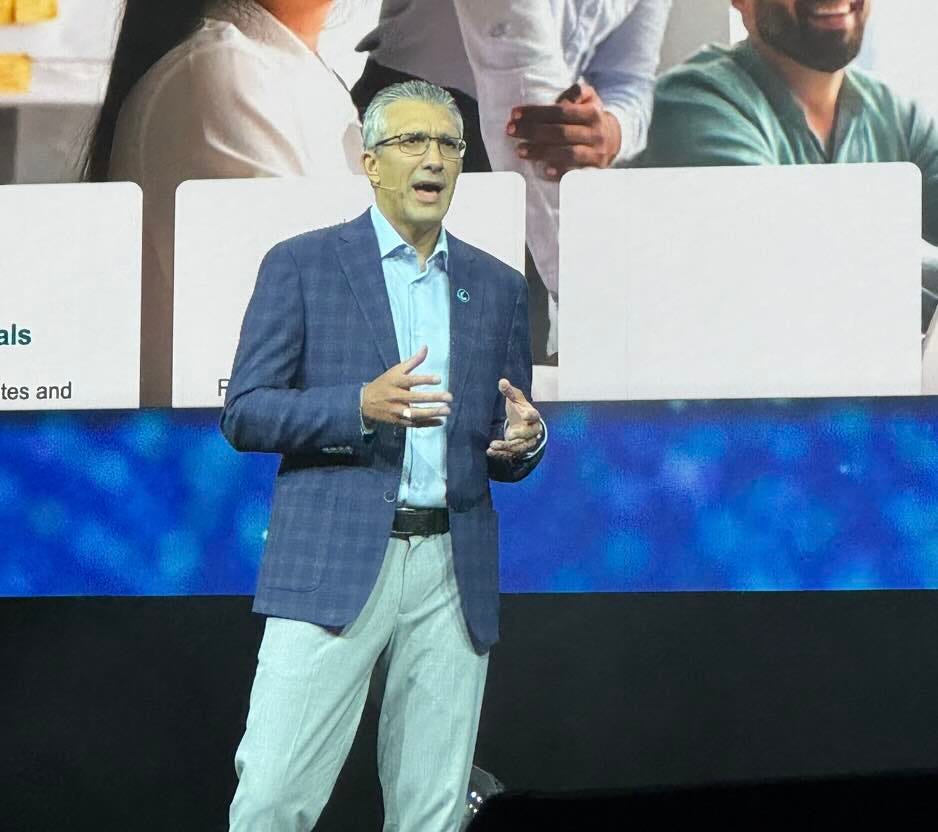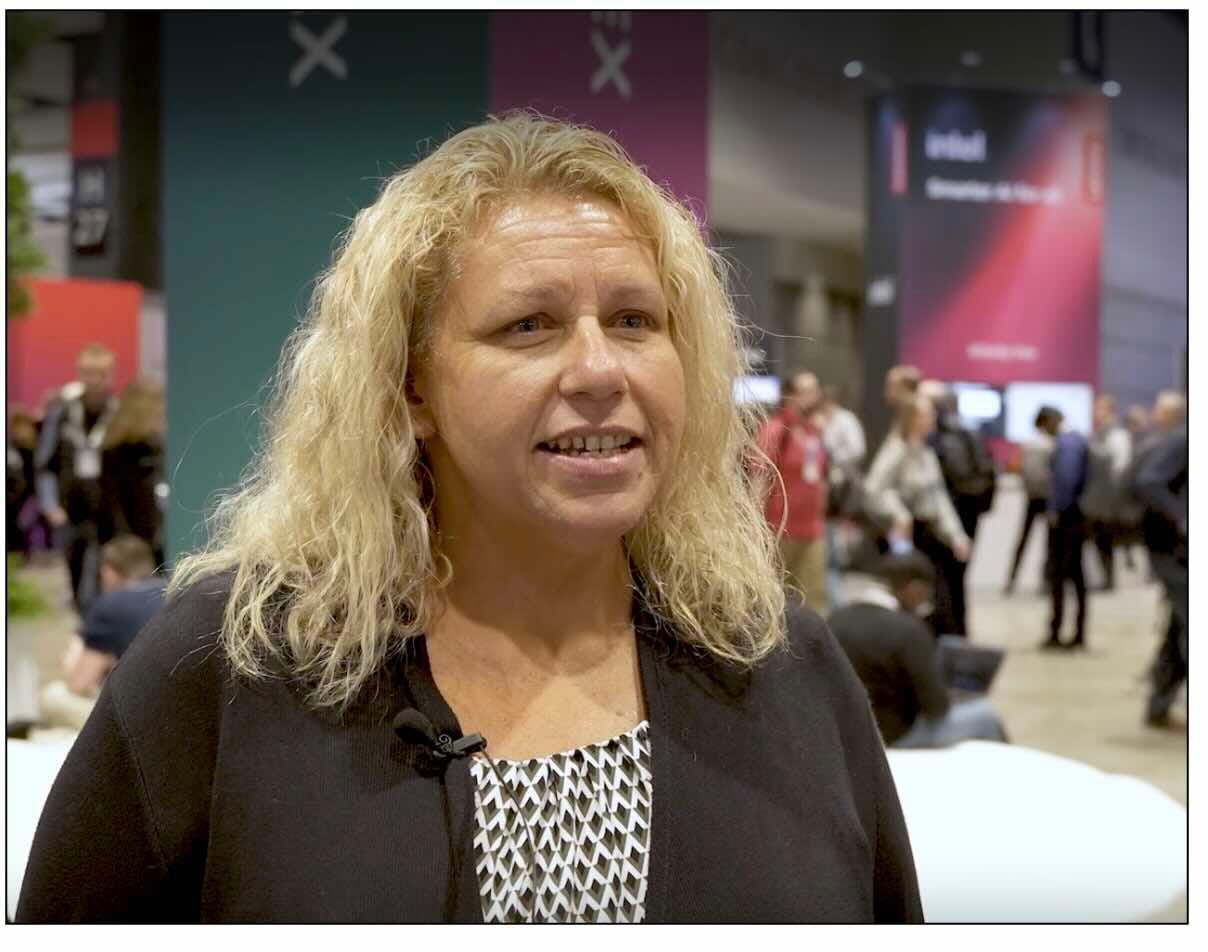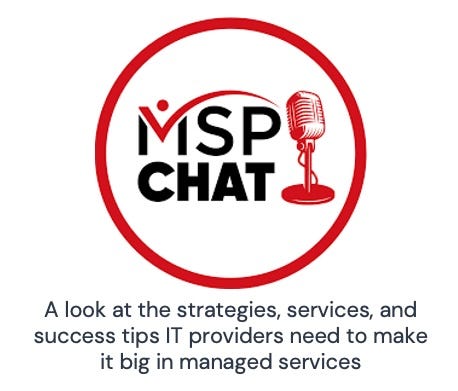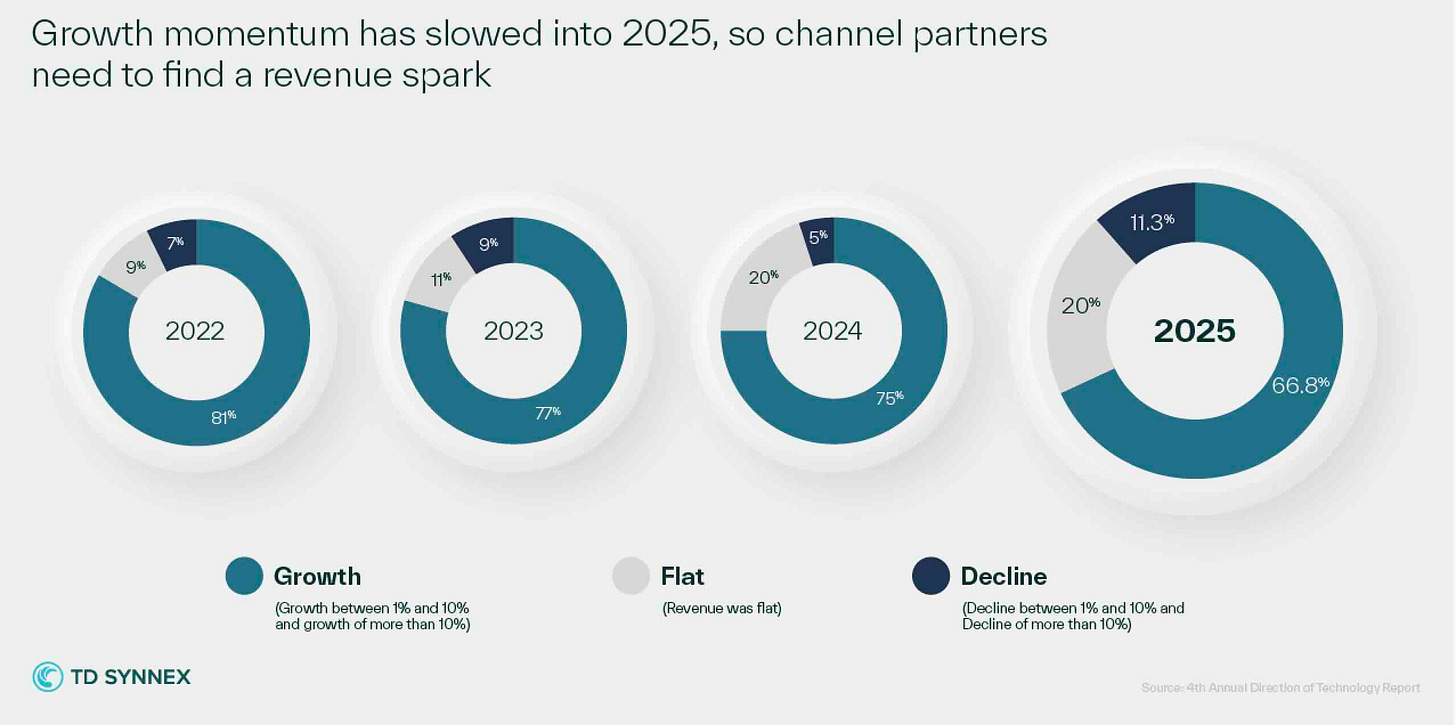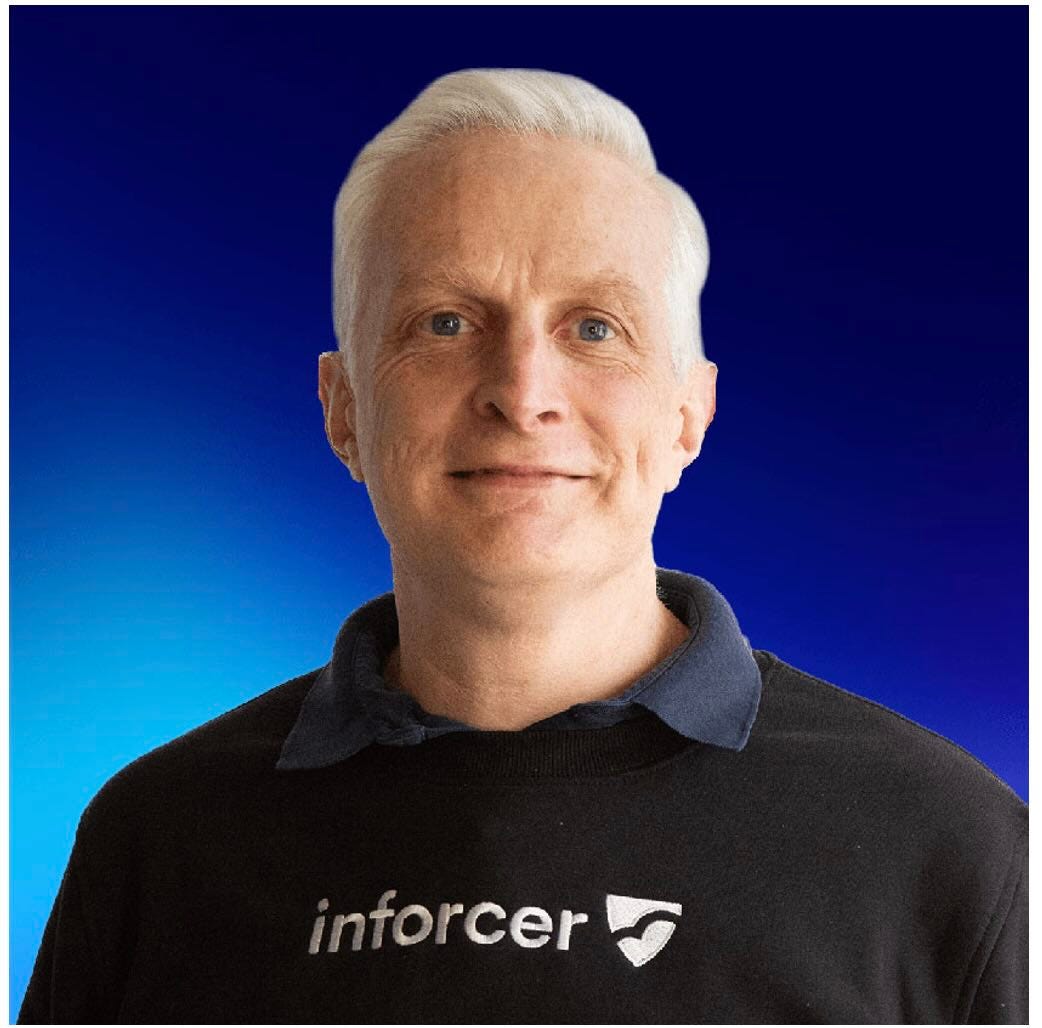At TD SYNNEX, It’s People AND Tech, Not Or
The distributor’s new partner portal exemplifies its use of technology to enhance versus replace personal relationships. Plus: What #IntuneForMSPs means for Nerdio, inforcer, and (especially) MSPs.
We’re big on whats in IT.
As in what’s hot, like AI, cited by 75% of channel partners as critical or very important to staying competitive in TD SYNNEX’s latest Direction of Technology report, which the distribution giant published last week during its 2025 Inspire conference. Or what’s cold, as in hardware resell, listed as a revenue source by just 44.7% of partners in that same study versus numbers north of 78% for various forms of services.
And to be sure, those of us in attendance at Inspire heard a lot about those and other whats over the course of the conference’s two days. Yet when North America president Reyna Thompson (pictured above) kicked off the event with a Thursday morning keynote appearance, she made a point of encouraging her audience to think less about whats and more about whys.
“What is your why? What’s driving you today?” she asked, before noting that it’s an easy question to answer at TD SYNNEX.
“We’re not confused. We know why we’re doing this,” she said. “We believe in the power of people to drive technology forward.”
Whats like AI, security, and yes, hardware, Thompson made clear, are all vital parts of how TD SYNNEX intends to replicate the 6.6% year-over-year revenue growth and record gross billings it had reported hours earlier, “but people will remain our priority.”
So it’s perhaps not a surprise that one of the biggest things Nate Herz (pictured), senior vice president and CIO for TD SYNNEX North America, wanted me to know about a what officially unveiled during Inspire—the company’s new PartnerFirst portal—was that every aspect of its design and intended impact directly reflect TD SYNNEX’s why.
“We really believe that the power of TD SYNNEX working with the partner community is people plus technology,” Herz says. “It’s not one or the other.”
In fact, much as rival Ingram Micro views its über-strategic Xvantage platform as a tool for driving better conversations with partners by automating away questions about pricing, availability, and order status, so too does TD SYNNEX see PartnerFirst as an enabler of personal interaction rather than a substitute for it.
“The way that we’re approaching this is not to reduce the personal element that we have in working with partners,” Herz says. “It’s using the technology to augment the human-to-human relationship.”
In part, one might add, by giving humans on the partner side of that relationship easier access to tools and benefits many of them didn’t even know were available.
“In talking to partners, what we realized is that we’ve invested in a great deal of capabilities as TD SYNNEX and partners were unaware of all those capabilities or weren’t taking advantage of all of those capabilities,” Herz says. “So what we wanted to do is bring that together into one experience.”
That experience encompasses both the Digital Bridge integration initiative you’ve read about here a couple of times before and TD SYNNEX’s StreamOne cloud marketplace.
“We have a dashboard that pulls together statistics and insights across the traditional business and cloud, including StreamOne,” Herz says, adding that users can search for physical and cloud products, orders, and subscriptions through the new portal as well. They can also combine cloud services and hardware on a single purchase now and pay for different parts of the sale in different ways.
“What we’ve heard from partners is that they want to order the one-time shot on one payment term, but then for the annuity items, they often want to place that order on different payment terms,” Herz explains.
TD SYNNEX designed PartnerFirst to be more than a procurement tool, though. “That’s very tactical. What we want to do is really elevate that by bringing in intelligence and insights to help with the management of the business,” Herz says. A “partner health and fitness” tool, for example, helps users benchmark themselves against peers across a range of variables and access training and other resources to raise their score.
Coming soon, according to Herz, are both a mobile app and an AI-based chat tool for checking on orders and researching products. Coming later, he adds, is an MCP server that will let partners query order and product data via generative AI from within either PartnerFirst itself or third-party solutions from vendors like ConnectWise and ServiceNow, among others.
“I hope that that will create a great deal of stickiness, and I think ultimately it will allow us to deliver technology to end customers in a better way,” Herz says. As in a more personal one.
TD SYNNEX flips the numbers on women in leadership
One of the many good reasons to listen to Dave Sobel’s excellent The Business of Tech podcast is that four times a year he scours thousands of public websites to see how the IT industry is doing at putting women and people of color in positions of authority. To probably no one’s surprise, Sobel’s latest update, distributed Friday, came in at 78% male, almost exactly where it’s been since he first began collecting these numbers.
Well, I did a little math of my own to calculate what portion of the nearly 30 TD SYNNEX leaders who spoke at Inspire during three general sessions on two separate days was male, and came up with 46%.
Which is to say that the other 54% were women, beginning with the first two speakers in the first general session, Thompson, who runs the show for TD SYNNEX North America, and Jessica McDowell, the distributor’s North America SVP for marketing and digital customer success.
I had a chance to discuss those numbers with another of the women on stage during Inspire, Tracy Holtz (pictured), TD SYNNEX’s vice president of cloud, while recording an interview set to appear this coming Friday on the podcast I co-host. What advice, I asked, would she offer organizations looking to make similar headway against an imbalance that remains all too common across most of IT?
Her answer began with making a commitment to keeping the employment pipeline filled with future female job candidates. Holtz actively encourages women to get into technology on social media, through organizations like the IAMCP, and during speaking appearances at local high schools and universities.
“I’ve mentored several university students, and some of them have pursued careers in technology,” she says. Efforts like that have paid off closer to home, Holtz adds, with her niece, who long insisted that she’d never work in the IT industry. “After many commitments to saying that she wasn’t going to, she does today,” Holtz says—and at TD SYNNEX, no less.
Holtz also credited TD SYNNEX’s success at nurturing female leaders to the support and mentorship provided by Elevate, the company’s business resource group for women, which she serves as a board member and which I’ve written about in the past.
But I’d cite a third important issue as well, shared with me by former TD SYNNEX CEO Rich Hume during the extremely busy months before Tech Data’s merger with SYNNEX closed in 2021. Progress on advancing women into leadership must begin with a commitment to that goal at the very top of the organization, he said. Evidence of the impact such a commitment can have was there in plain sight at Inspire last week.
Speaking of Tracy Holtz…
My interview with her, and another recorded at Inspire with Ed Morales, VP of AI and high-growth technology strategic business development at TD SYNNEX, will both run in the next episode of MSP Chat, the podcast I co-host. But why wait until then to enjoy the interviews and insights we bring you on that show every week when you can tune into a whole library full of conversations with C-suite leaders from the likes of Kaseya, N-able, and Sophos right now, right here?
Are those headwinds we’re feeling in managed services?
I’ve got more from Inspire on AI and cloud computing coming in next week’s post but want to close out my coverage this week by calling out a few ever-so-slightly worrying findings from the Direction of Technology report, including one indicating that 66.8% of partners are confident about growth. That sounds pretty good, actually, until you consider that the same figure stood at 75% in last year’s report, and that the percentage of partners with declining revenue has more than doubled since 2024, from 5% to 11.3%.
You can see the same trend reflected in the TD SYNNEX report’s Net Growth Index, which weighs partners with climbing revenue against partners with declining revenue. On a scale in which anything over 100 means revenue overall is trending up, MSPs came in at 92 this year and VARs at 81. The Net Optimism Index, which works the same way, showed MSPs at 98 and VARs at a pretty dismal 54.
That all rhymes at least a little with recent data from Canalys analyst Robin Ody and ConnectWise’s Peter Kujawa, both of whom say MSPs in aggregate are growing between 10 and 11 percent at present. That too sounds better than it is in both cases because it’s either down a touch from data collected since January (per Canalys) or at the low end of historic norms (per ConnectWise).
“While growth is still in double digits, managed services is under pressure and differentiation is key (but much harder to do than to say),” Ody writes. To relieve that pressure, he adds, “we’ll need some economic and political stability to help customers plan IT services budgets, and we need to be able to articulate the value of an IT managed service beyond just ‘cyber’ and ‘AI’.”
Microsoft discovers MSPs. Again.
Last week’s post, in which I shared a prediction by Syncro CEO Michael George that Microsoft will more or less own the future of managed services, failed to note an at least potentially complicating wrinkle: a lot of managed service providers don’t much like Microsoft.
Or at least they didn’t the last time I wrote about that topic. That was admittedly a while ago, but I’m fairly confident the same complaints apply today. Unless you’re big enough to drive lots of cloud and AI consumption for Microsoft, you probably don’t love Microsoft’s partner program, are weary of constant rule changes like the Cloud Solution Provider program revisions going into effect this Wednesday, don’t hear from Microsoft’s people too often, and don’t see a lot of evidence Microsoft cares about your opinion on any of this one way or the other.
There might—just might—be reason to hope that picture’s on the verge of brightening a little, however, based on interviews last week with both of the vendors involved in an announcement I referred to briefly in that earlier post. Microsoft has apparently awakened to just how badly it needs MSPs.
That announcement, which looks even more significant now than it did a week ago, was the launch of #IntuneForMSPs, an initiative within Microsoft to get more MSPs using its Intune management tool, something it very much needs to retain and add cloud revenue.
The issue is that many Microsoft 365 subscribers are paying for functionality they don’t know they have or don’t know how to use, and many more would consider upgrading to a Business Premium, E3, or E5 license if they had a clue what to do with them. Fixing that is a priority for Microsoft.
“It helps provide stickiness,” observes Will Ominsky, vice president of MSP sales at Microsoft cloud management vendor Nerdio, “and it helps Microsoft sell higher licenses.”
Intune is the tool of choice for activating unused M365 features, but it’s also a single-tenant product. That’s no problem at businesses large enough to have an in-house IT department but a huge issue at SMBs supported by MSPs. Rolling out Microsoft 365 components is hard enough within one tenant, observes Christian Nagele (pictured), chief strategy officer at Microsoft 365 policy management vendor inforcer, which you’ve read about here recently.
“If you’re an MSP doing it for over 100 tenants, it’s impossible without a multi-tenant capability,” he says, “and delivering multi-tenancy exclusively for MSPs is quite difficult.”
Which is why Microsoft, via #IntuneForMSPs, has officially named inforcer and Nerdio its go-to partners for Intune multi-tenancy. That’s obviously a great development for those two vendors, which provide Intune multi-tenancy in their products and now have an industry giant actively encouraging MSPs to buy those solutions. It might, however, be a great development for MSPs as well. Intune multi-tenancy wouldn’t matter much to Microsoft if MSPs didn’t matter as well, and MSPs suddenly matter a lot to Microsoft.
“I’ve been in the game quite a long time, and we’ve all probably seen Microsoft seek to engage closer with various sections of the market through MSPs, but this time we’ve got a ringside seat to the level of their intent, and the intent is real,” Nagele says. “The sponsors of this program internally are incredibly senior.”
They’re pushing the people beneath them, moreover, to understand MSPs better and act on what they learn.
“We’ve got our first session coming up in a couple of weeks where we’re putting together a small group of Intune specialists in the MSP space to give senior folks on the Intune product side really good insight into how MSPs engage and interact with Intune,” Nagele says. “Microsoft are serious about delivering for MSPs, and they’re serious about listening and serious about taking action, which is pretty exciting.”
To be clear, what Microsoft is truly serious about is selling software. MSPs are just a means to that end. But if that leads to more than just Intune product tweaks and lasts for more than just a few months, it’s still probably a promising change.
How to get what inforcer and Nerdio have
Official endorsement of their products by a company that nearly every MSP on the planet partners with is reason enough for inforcer and Nerdio to feel good about being Microsoft’s first #IntuneForMSPs partners. There are others as well though.
“We now have more access to more people at Microsoft,” says Nerdio’s Ominsky, adding that the same goes for people at marketplace operators like Pax8, Sherweb, Ingram Micro, and TD SYNNEX that do a lot of Microsoft business. inforcer, for its part, was recently admitted to the Microsoft Intelligent Security Association.
“There are only 160 ISVs in that program, and I think there’s only one other MSP-focused vendor in there,” Nagele says.
Of course, it helps if you’re a vendor with dreams of enjoying similar privileges to be in the right place with the right product at just the moment Microsoft needs what you know how to do. But it helps as well to put a lot of time into proving to Microsoft just how committed you are to partnering with them, as Nerdio’s been doing since its inception.
“I think back to the very early days,” Ominsky says. “It wasn’t us taking and asking for things. We were giving, and giving a lot.”
The company’s been faithfully attending Microsoft’s Ignite conference for developers and IT professionals conference ever since, and as far as Nerdio is aware, it’s the only vendor of its kind transacting on the newly renamed Microsoft Marketplace. There’s a lesson in there, according to Ominsky, for anyone else hoping to earn Nerdio’s most-favored-vendor status.
“Make it a partnership where you can do more together, because that’s how you win,” he says.
Also worth noting
Microsoft’s Cloud Solution Provider program changes go into effect Wednesday. Sherweb has a program to help members through the transition.
TeamViewer has a new MSP partner program.
JumpCloud has launched an asset management tool that automatically tracks, manages, and reports on hardware assets from procurement through retirement.
The latest update to ManageEngine’s ServiceDesk Plus includes a new generative AI virtual agent, workflow builder, and script generator.
Seems like just yesterday I was hanging out with Barracuda CEO Hatem Naguib. Now he’s moving on to new opportunities and RSA veteran Rohit Ghai is moving in to replace him.
Acronis Protected Workspace is a new MSP service combining endpoint security, backup, EDR/XDR, and management for client workspaces.
Also from Acronis: it’s partnering with Seagate to deliver Acronis Archival Storage, an S3-compatible solution for long-term data retention and protection.
WatchGuard’s newly launched FireCloud Total Access unifies secure web gateway, firewall-as-a-service, ZTNA, and identity controls within a single “hybrid SASE” solution.
Proofpoint has rolled out new AI data governance, data security, and agentic AI security solutions.
Keeper Security now streams privileged access activity straight into Google Security Operations, resulting in enhanced detection of breaches.
Stellar Cyber’s 6.1 release adds agentic AI features, customizable machine learning detections, advanced integrations, and more.
Sumo Logic has introduced Dojo AI, an agentic AI-powered platform on AWS designed to help SOC teams streamline security operations and accelerate threat detection.
Pure Storage has added cyber resilience and AI readiness functionality to its core platform and rolled out integrations with CrowdStrike, Veeam, and Superna.
Lenovo has launched new SMB-friendly infrastructure bundles for AI, business protection, and more.
Channelscaler’s new AI-powered partner program automation modules are designed to streamline partner engagement, automate workflows, and more.



